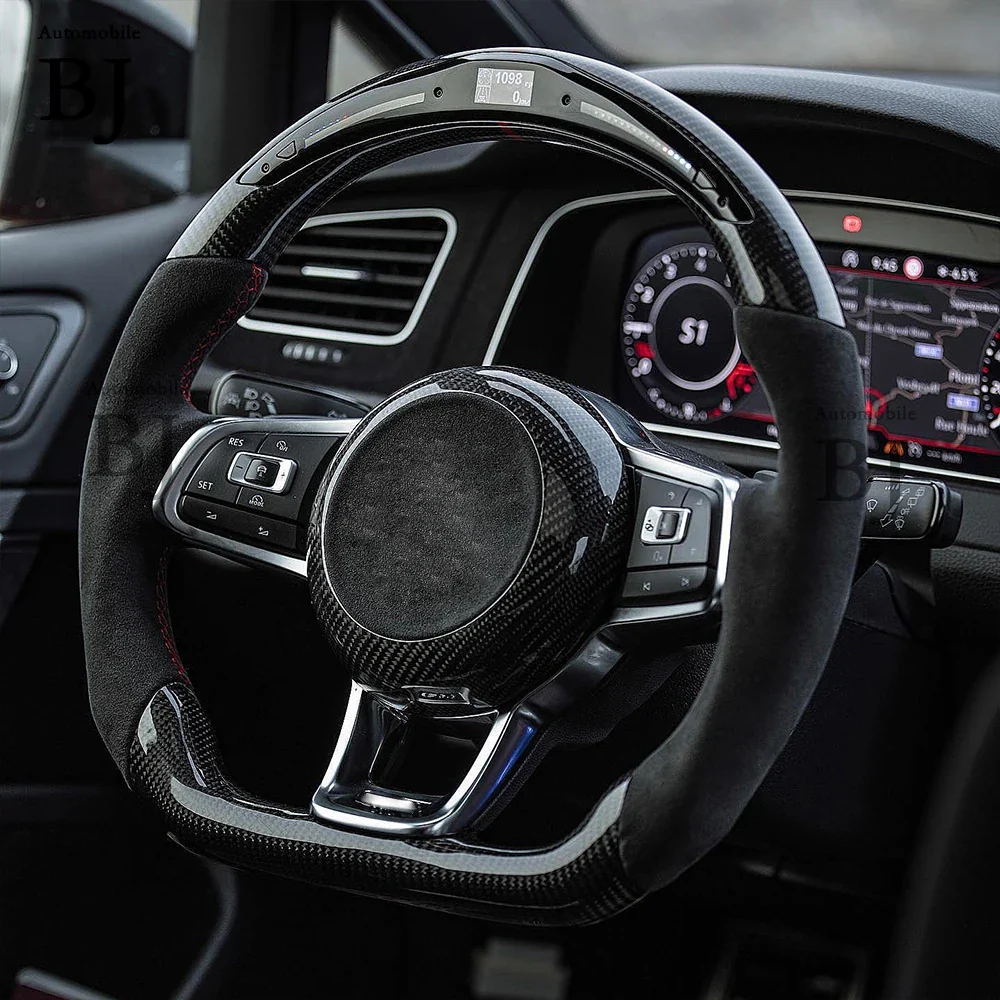
How to Choose the Right Steering Wheel for Your Car: Material Matters More Than You Think
Share
The steering wheel is the part of a vehicle that drivers interact with the most. When choosing a car—or upgrading your ride with a custom steering wheel—it's crucial to understand what makes a good one. Here's a guide to help you evaluate the key aspects: grip, functionality, and material.
 1. Plastic Steering Wheels: Budget-Friendly, Practical, but Basic
1. Plastic Steering Wheels: Budget-Friendly, Practical, but Basic
Yes, some new vehicles still come with plastic steering wheels, especially in budget-friendly or entry-level models. Common types include PU self-skinning wheels, modified polyolefin, or nylon-based designs.
✅ Pros:
-
Durable and low-maintenance
-
Resistant to cracking and deformation
-
Affordable
❌ Cons:
-
Feels rough to the touch
-
Can feel icy cold in winter
-
Lacks premium aesthetic appeal
Plastic may look and feel cheap, but it's practical. For many cars under $15,000, especially in domestic and economy segments, it's still the go-to material.
 2. Leather Steering Wheels: A Blend of Comfort and Style
2. Leather Steering Wheels: A Blend of Comfort and Style
Most mid-range and premium vehicles now come with leather steering wheels, which can be either synthetic or genuine leather. Higher-end models may even use Nappa leather, known for its smooth feel and luxurious appeal.
✅ Pros:
-
Comfortable grip
-
Reduces slippage
-
Enhances interior aesthetics
-
Can come with heating or perforation features
❌ Cons:
-
Natural leather is sensitive to sweat and can become glossy over time
-
Lower-grade leather may crack or peel with age
A fun saying among car enthusiasts goes:
“BMW’s real leather feels like plastic, while Mercedes' fake leather feels like the real thing.”
Take it with a grain of salt—but leather quality does vary across brands.
 3. Wood Trim Steering Wheels: Premium Vibes, But Practical?
3. Wood Trim Steering Wheels: Premium Vibes, But Practical?
Wood-grain steering wheels are a common feature in flagship luxury models—think Mercedes S-Class, Bentley, or Rolls-Royce. They offer strong visual appeal and an old-school charm.
✅ Pros:
-
Highly luxurious appearance
-
Often paired with multi-function buttons
-
Classic touch for high-end models
❌ Cons:
-
Wood sections can become uncomfortably hot when exposed to sunlight
-
Prone to discoloration or cracking over time
This style is all about aesthetic and status—practicality takes a back seat.
 4. Alcantara Steering Wheels: For Performance and Precision
4. Alcantara Steering Wheels: For Performance and Precision
Used mostly in sports cars like the Nissan GT-R or Aston Martin Rapide, Alcantara steering wheels are wrapped in a suede-like synthetic material favored for racing.
✅ Pros:
-
Unmatched grip—ideal for spirited driving
-
Gives a race-inspired cockpit feel
-
Lightweight and sporty
❌ Cons:
-
Easily absorbs dust and sweat
-
Requires frequent cleaning
-
Higher cost
This material is for those who prioritize driving dynamics over long-term maintenance. It's not unusual in the world of custom performance steering wheels.
 5. Carbon Fiber Steering Wheels: High-Tech, High-Price
5. Carbon Fiber Steering Wheels: High-Tech, High-Price
The carbon fiber steering wheel is the crown jewel in high-performance vehicles like Koenigsegg or Ferrari. Lightweight and futuristic, it's often the top choice for supercar enthusiasts.
✅ Pros:
-
Incredible strength-to-weight ratio
-
Very stylish, high-tech appearance
-
Does not absorb sweat or become slippery
❌ Cons:
-
Very expensive to manufacture
-
Can become scorching hot in summer
-
Difficult to repair or replace
If you're considering a carbon fiber steering wheel upgrade, prepare for both a financial and visual statement.
✅ Final Thoughts: Is More Expensive Always Better?
Not necessarily. The best steering wheel is the one that matches your driving needs and lifestyle. Whether you're customizing your car for performance, luxury, or daily comfort, always consider:
-
Material durability
-
Functional design (grip, buttons)
-
Aesthetic integration with your interior
